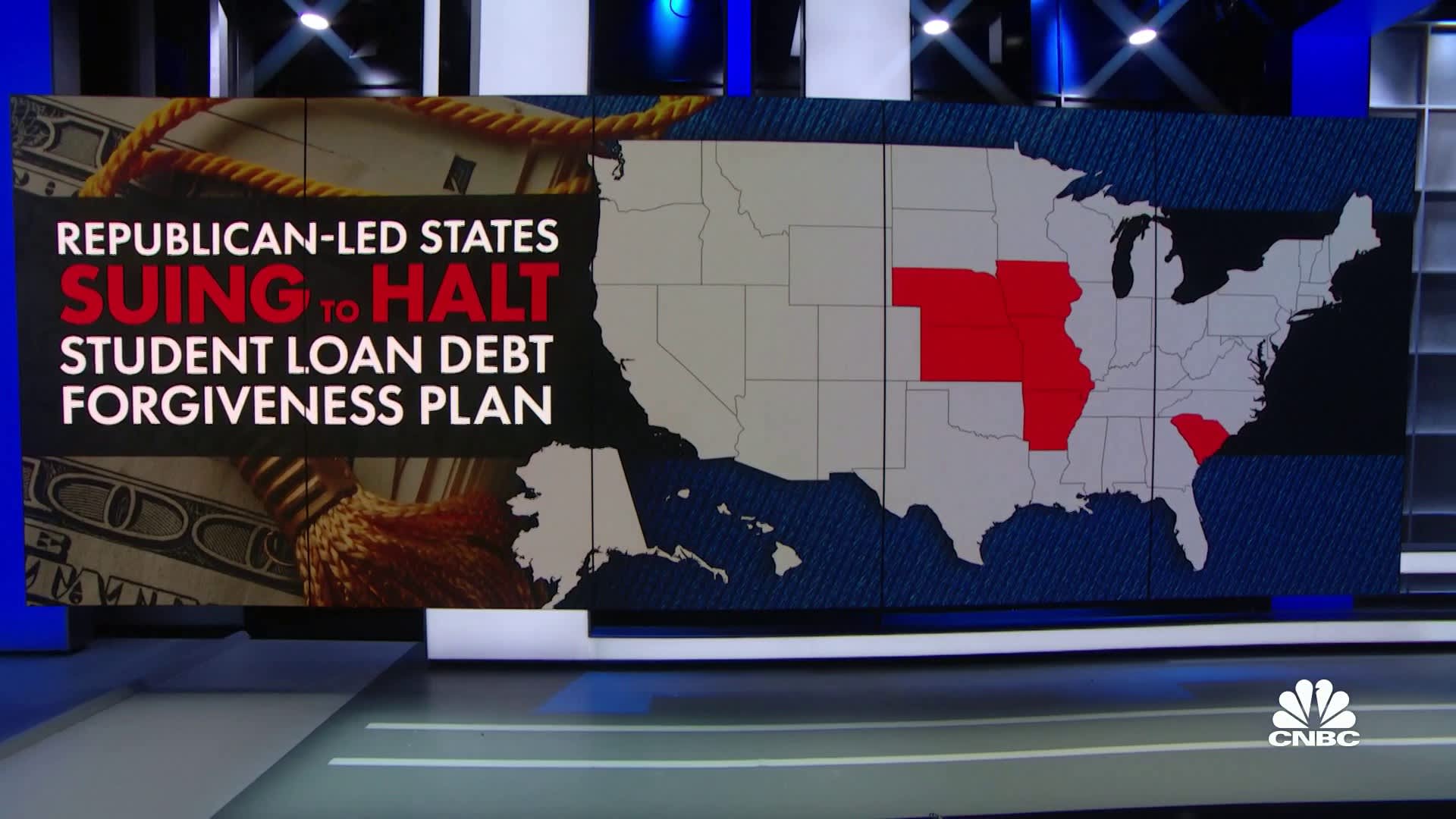Demonstrator Gan Golan of Los Angeles at Occupy DC activities in Washington, D.C.
Jacquelyn Martin
President Joe Biden’s order to cancel student loan debt for millions of Americans could cost an average of $30 billion per year over the next decade, according to Biden administration estimates.
The 10-year cost will be roughly $305 billion, as measured by reduced cash flows into the government, according to the Education Department. Over 30 years, that would be about $379 billion in today’s dollars.
The Congressional Budget Office has estimated the plan will cost about $400 billion over 30 years. In addition, the cost of outstanding loans is set to increase by about $20 billion this year.
More from Personal Finance:
GOP challenges could put student loan relief in jeopardy
8 million student loan borrowers will get automatic forgiveness
In reversal, government excludes some from student debt relief
Biden announced the sweeping plan to cancel federal student debt in August. That includes $10,000 per borrower, or up to $20,000 for those who have Pell Grant loans, which are typically loaned to undergraduate students who demonstrate financial need.
Individuals with less than $125,000 in income or married couples with joint income of $250,000 are eligible for the debt relief.
The plan also will let borrowers cap the repayment of undergraduate loans to 5% of their monthly incomes, among other changes aimed at providing relief to the estimated 40 million people who would benefit from it.

The student debt relief plan comes as payments on federal student loans, which have been paused during the pandemic, are set to resume in January.
“Nearly 90 percent of relief dollars will go to those earning less than $75,000 per year,” the Education Department said. “And, no borrower or household in the top 5% of earners will benefit from this action.”
However, research from the Committee for a Responsible Federal Budget released this week argued that 57% to 65% of the student loan debt cancellation and repayment pause will benefit those in the top half of the income spectrum.
“In the end, the Administration’s student debt cancellation proposal is costly, inflationary, will drive up higher education costs and will deliver the majority of the benefits to those in the top half of the income spectrum,” the nonpartisan organization writes.
The plan has drawn criticism from Republicans, and is subject to several legal challenges.
However, White House press secretary Karine Jean-Pierre this week said “it’s a shame” Republicans are trying to block the relief and reaffirmed Biden’s commitment to carrying the plan through.
“The President is going to continue to work for the American people, trying to find ways to give them a little bit of a break,” Jean-Pierre said during a press briefing on Tuesday.

